Ficus Elastica
The rubber plant is a tree-like variety. It differs from others in its large leathery leaves, which are:
- solid dark green,
- variegated (Belize, Teneke) – with a white edge or spots,
- with burgundy spots (Abidjan),
- almost black (Black Prince).
It branches rather poorly, usually growing simply upwards: if not trimmed, it can reach the ceiling of the apartment. It is propagated by cuttings.
F. elastica is unpretentious in care: it does not like overwatering and direct sunlight. Otherwise, plants, especially monochromatic ones, can grow in any conditions.
Now let’s look at the most popular varieties of this ficus:
Abidjan. It has large, glossy, oval-shaped leaves. One of its distinctive features is the change in leaf color depending on age – from pink-brown to deep green. It does not tolerate shade well, so provide it with diffused light.
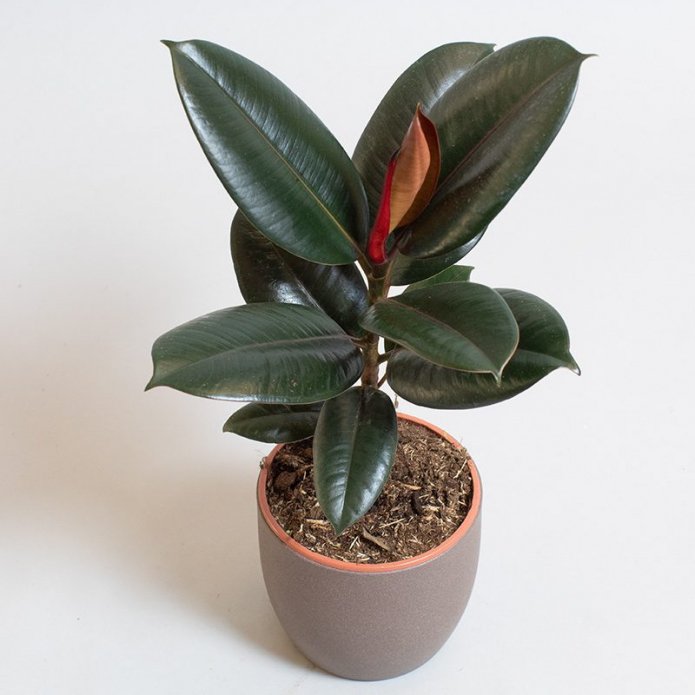
Belize. It has thick, oval-shaped leaves with a pointed end. And the coloring will not leave anyone indifferent – the leaves are decorated with cream and pink spots on a green background. Loves regular watering and the same bright light without direct sunlight.
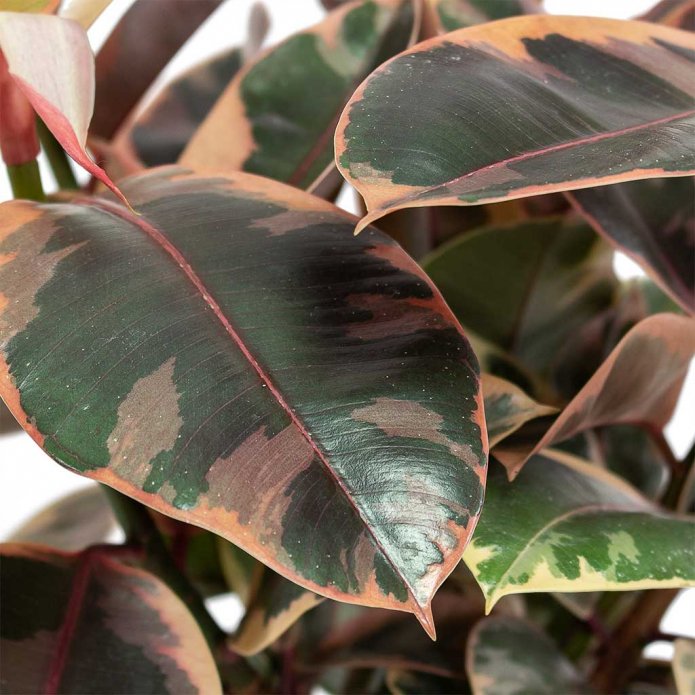
Melanie. This dwarf variety was bred by Dutch breeders. It has dense foliage of small size. In addition to the rich green color, Melanie’s foliage can also be variegated. I recommend it for novice gardeners, because it is quite unpretentious and resistant to parasites and diseases.
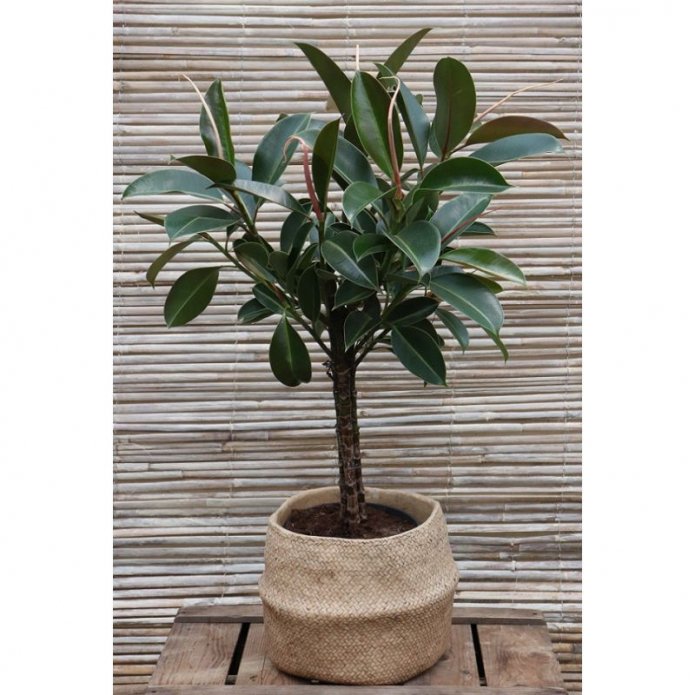
Robusta. It has large green leaves on the outside and a purple underside. It is undemanding in care and can grow up to 5 m in height.
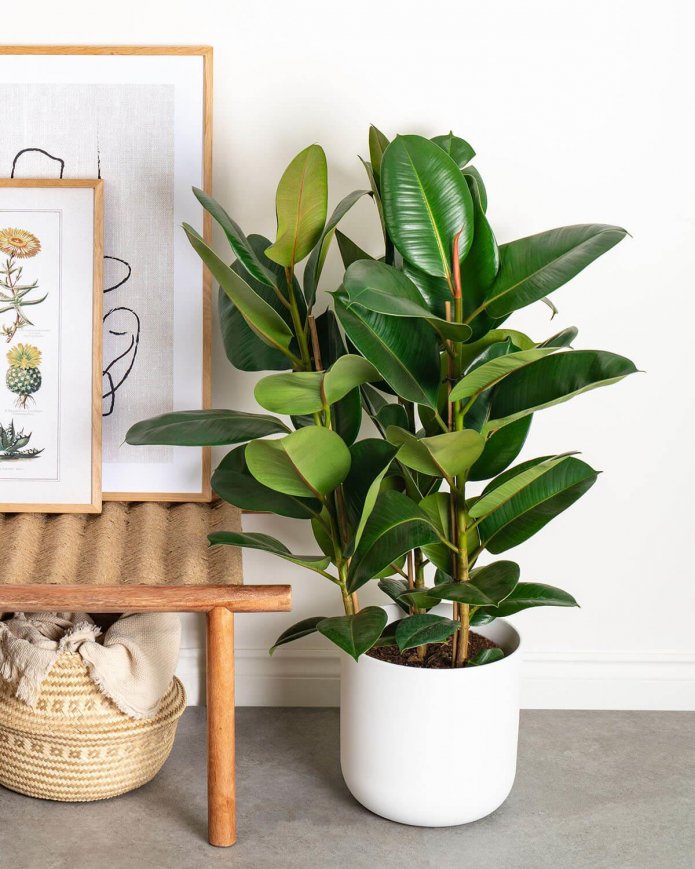
Black Prince. As the name of the variety suggests, the ficus has very dark colored leaves. The size does not exceed 2 meters.
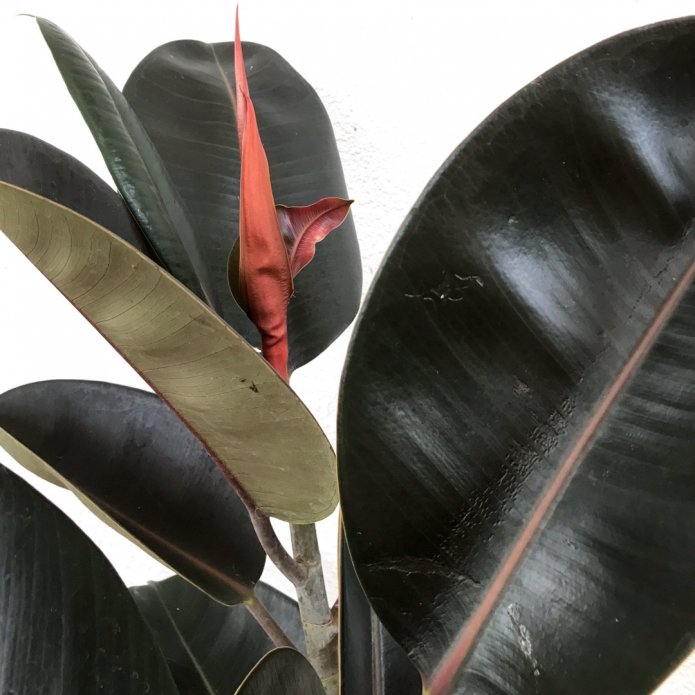
Ficus Benjamin
This type of ficus cannot be called definitely the second or the first – rather, it shares the first place in popularity with the already described rubber-bearing brother.
But visually, these two ficuses are radically different from each other: if Elastika has large leaves and an almost complete absence of branches, then Benjamin, on the contrary, stands out for its small size (4-12 centimeters in length), excellent branching.
Often, several plants are intertwined into a braid or lattice, achieving even greater decorativeness.
Within the species f. benjamina there are many varieties: they differ in size, shape, color of leaves.
Golden Monique has light green leaves 5-6 cm in size. The edges of the leaves have a wavy shape, which gives it a more decorative and original look. Loves abundant watering and can tolerate temperatures from 13 degrees. Do not place it in dark rooms and avoid drafts.
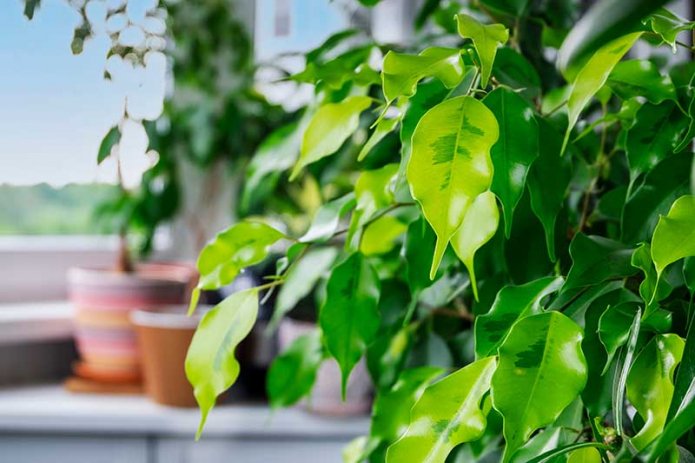
Starlight stands out with an almost white crown. Do not allow overwatering, but regularly water and spray it in hot weather. The foliage has a regular shape, about 5 cm in size.
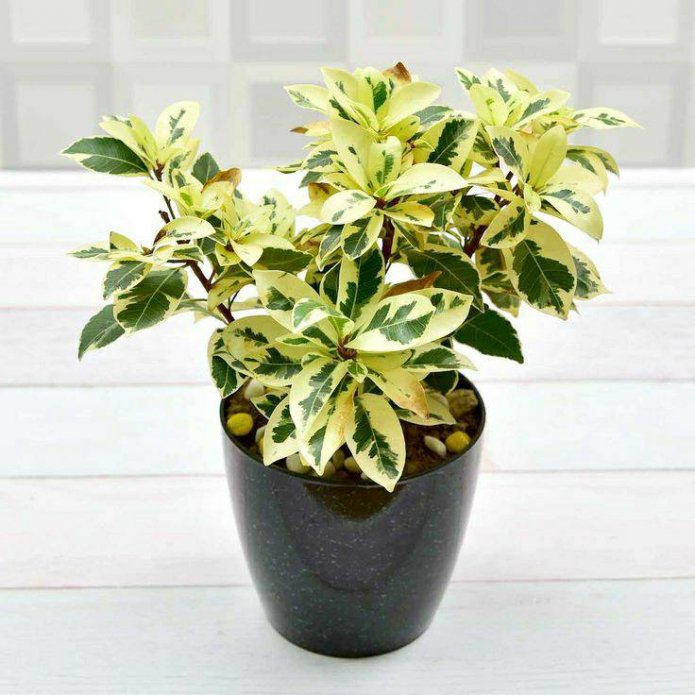
Barok can be recognized by its curled leaves (curly crown). It does not require much attention and cleans the air perfectly. Among its features, I would like to highlight its fairly rapid growth.
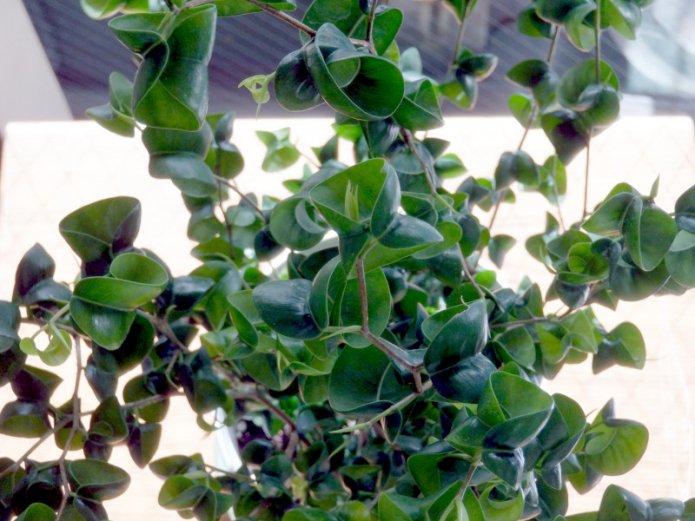
Golden King has a variegated coloring in green and yellow tones. Before watering, be sure to make sure the soil is dry. You shouldn’t buy it if you move often.
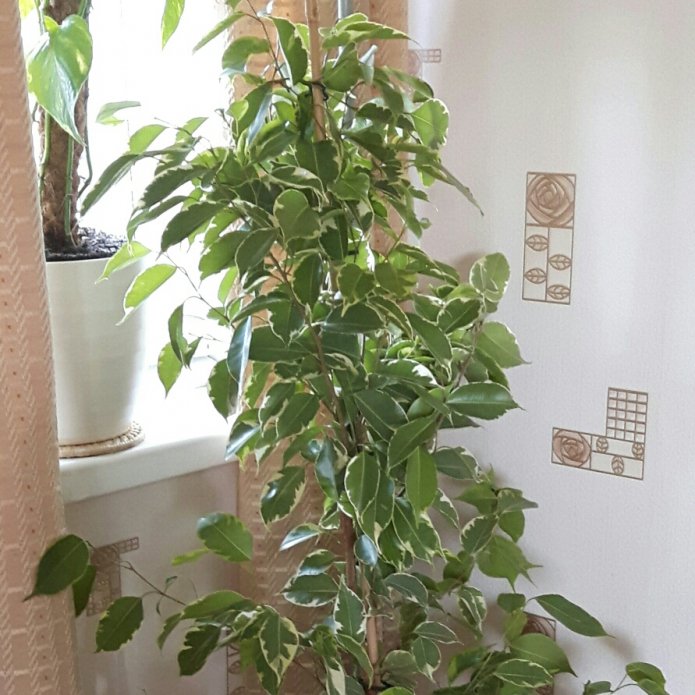
Samantha. The variety comes from Southeast Asia. It has a white stripe along the contour of the leaf blade. The growth rate is low, so feel free to buy it for a small-sized plant.
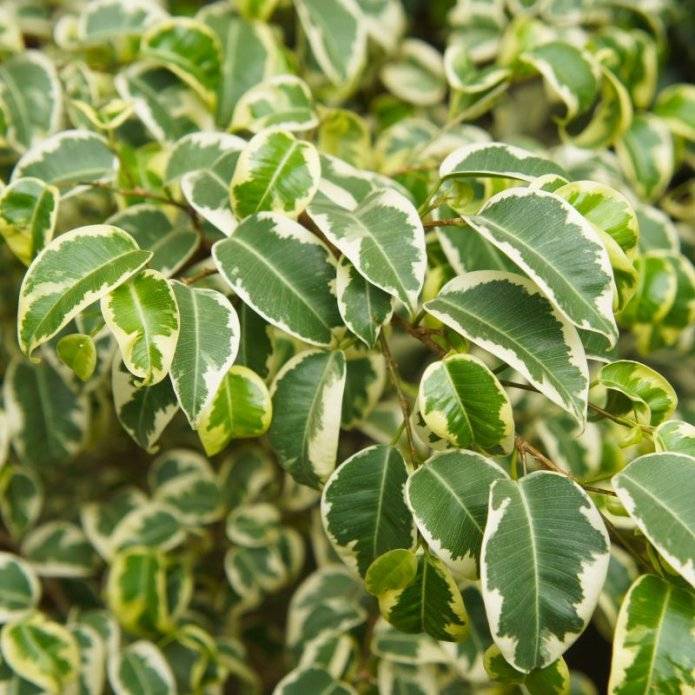
Ficus Lyrata
This once rare variety has recently become surprisingly popular. f. lyrata grows in the same way as f. elastica — forming a tall trunk without branches. It begins to branch only after 4 years or as a result of pruning.
It is distinguished primarily by its large (up to 50 cm!) unusual leaves, expanding towards the ends. Light veins are clearly visible on the leaves with a wavy edge.
The common ficus lyrata is a large plant, easily reaching 2-3 m in height. But in indoor conditions, its miniature species can be grown.
The compact variety of Lyrata Little Fiddle reaches 1.5-2 m in height. Large leaves reach 25 cm. Due to their decorative appearance, they are used not only in offices, but also in living rooms.
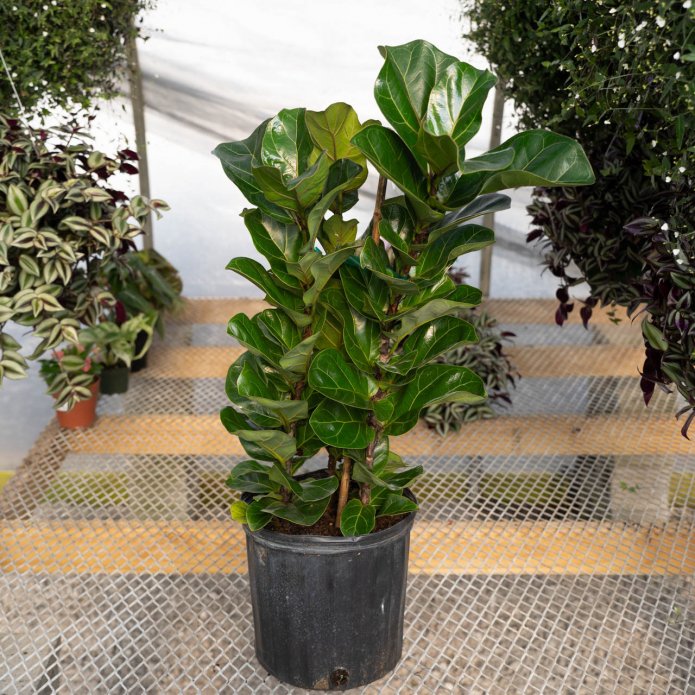
Compacta. Originally from the tropics, it prefers bright, diffused lighting. I advise you to protect it from direct sunlight to avoid getting burned.
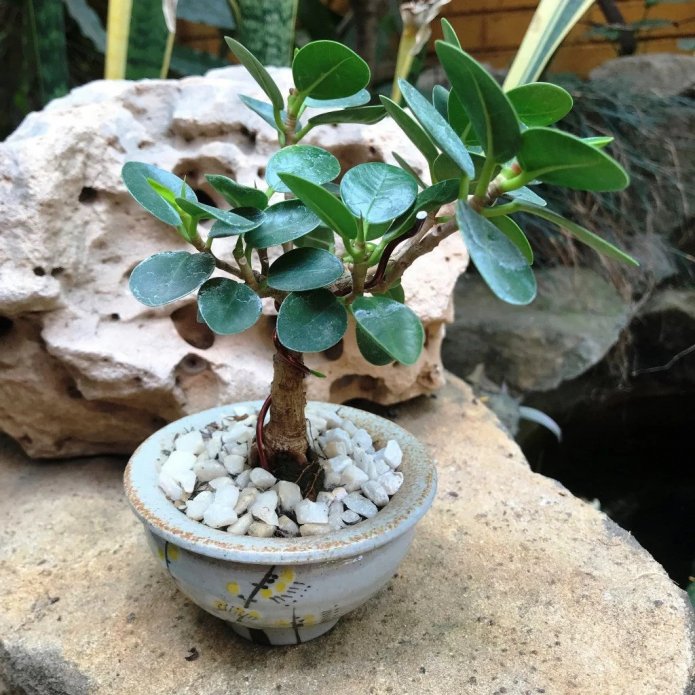
The Bambino variety is not only small in size, but also has miniature leaves. Quite demanding in care: it is important to wipe it and water it regularly. And at low humidity it is important to additionally humidify the air. Do not forget to provide this ficus with good drainage and make sure that water does not accumulate.
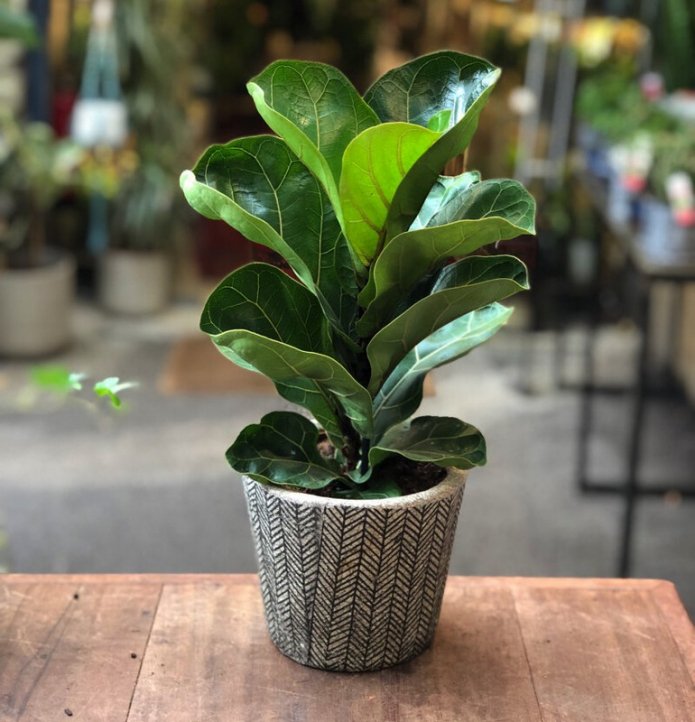
Ficus Binnendijka
Another variety that is easy to recognize by its appearance – thin (up to 40 mm) long (25-30 cm) leaves, aerial roots, light trunk. Because of the unusual foliage, it is sometimes confused with nolina, but the ficus has a thin trunk. The crown is usually dark green (Ali, Amstel King), but there are also variegated varieties (Amstel Gold).
The Benedicta variety does not like bright sun, preferring to grow in partial shade. Water it only after the top layer has dried – this way you will never flood the plant or damage it.
Ali (Alii). Visually, it is very similar to a palm tree. It is also called narrow-leaved fig. Room temperature will be the best option for it. Prefers a lot of bright and diffused light.
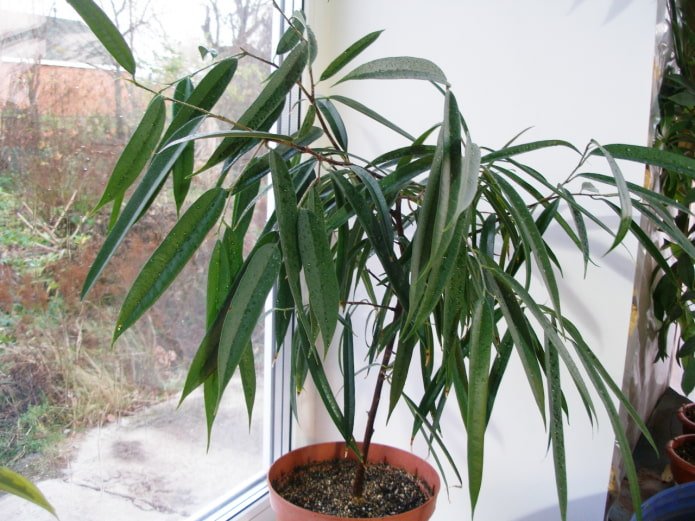
Amstel Gold variety. The height of the ficus can reach two meters and at the same time grows quite quickly. The narrow shape of the leaves will fit perfectly into your living room. And the unusual coloring will make it the center of attention. It is one of the most unpretentious ficuses.
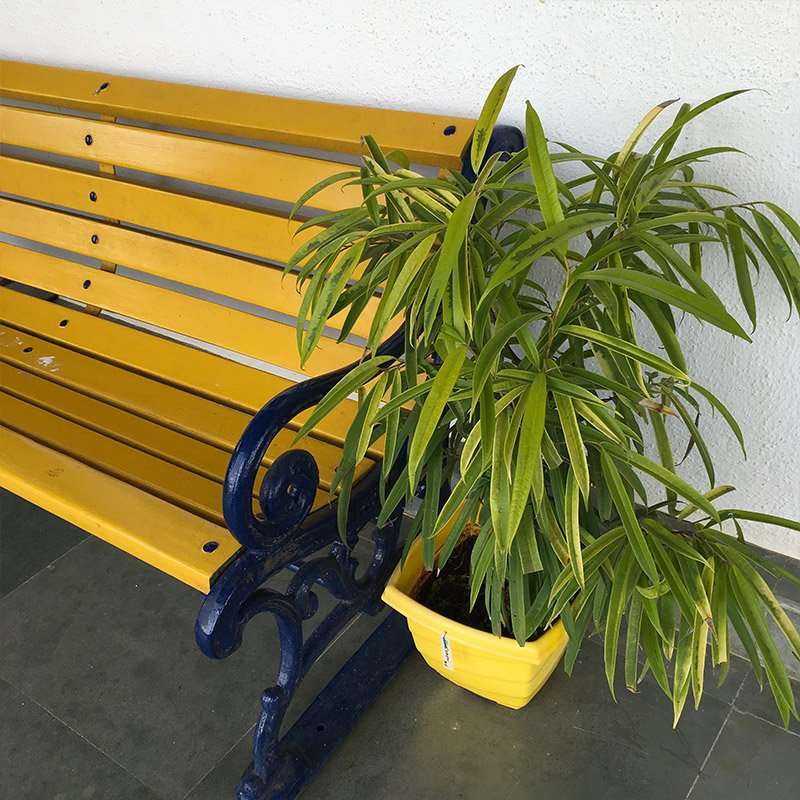

Ficus Pumila
We have already looked at large-leaved and small-leaved trees, it’s time to get acquainted with an extremely unusual variety – f. pumila. This dwarf groundcover flower hangs its branches down rather than pulling it up.
Another difference is its love of the sun, it can even grow on the eastern or southern side under direct rays. It loves water no less – you shouldn’t be afraid to overwater the pumila, drying out the earthen lump is fatal for it.
The leaves are round and thin. Almost all species are variegated (Sunny, Dorte). Propagated by shoots.
- White Sunny. A dwarf variety of ficus has small leaves no more than 4 cm in size and a wide white border. Creeping branches look great both on a windowsill and on a support. Easily tolerates slight shade. You should not place it in a room with drafts. The soil should not be damp, but moderately moist.
- Dort. Quite a rare variety of ficus has an unusual color with golden spots.
- Curly. As the name of the variety suggests, the distinctive feature of the ficus is its wavy shape of the leaves. By the way, it grows quite slowly.
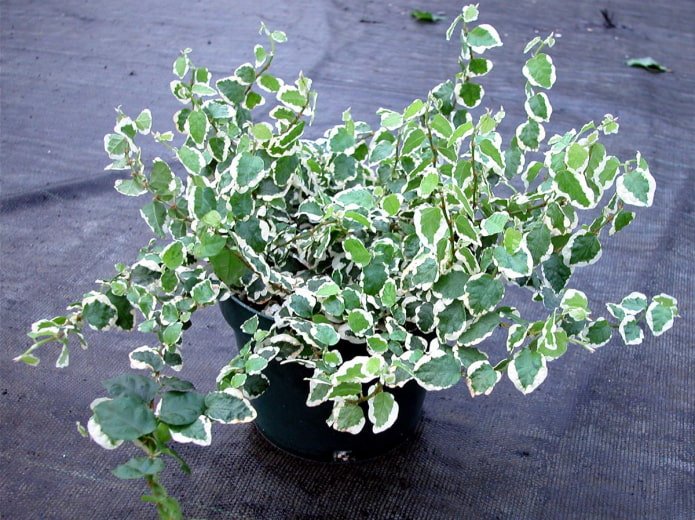
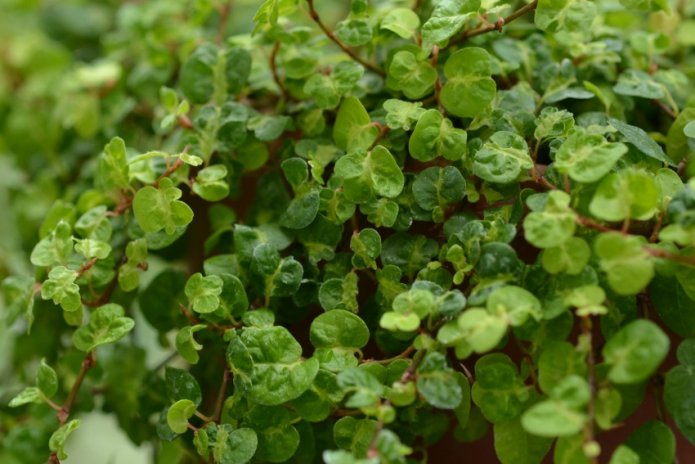
Bengalese Ficus
The second name of this variety – banyan – comes from its unusual form of life in the wild. The tree forms aerial roots, which descend downwards and take root, and over time, they become woody and turn into additional trunks. Thus, the tree can “step” to the side, expanding the diameter of its crown and forming a whole grove from a single plant.
In the wild, it grows up to 30-40 m up and up to 400 (!) in width.
In room conditions, f. benghalensis is not so large – 2-3 m. Outwardly, it resembles a rubber plant and lyrata at the same time.
- Audrey. It has a luxurious crown with green oval-shaped leaves, which usually have pinkish veins. Often chosen by novice gardeners, because it is quite unpretentious.
- Roy. The size usually does not exceed 2 meters, so it is suitable even for a small room. It also has large glossy leaves. Like other types of ficus, it prefers bright, diffused lighting.
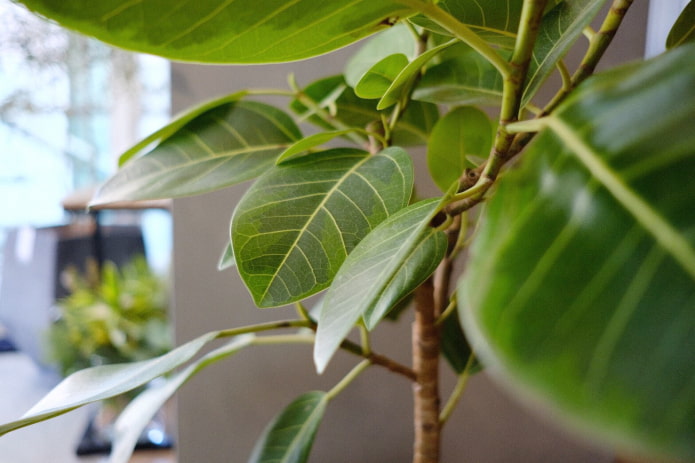

Ficus Microcarpa
Perhaps one of the most decorative species. Flower lovers call it “underground” name bonsai, because the bizarre crooked trunk resembles this variant of plant formation. The lower part of the trunk is bare, on top there is a dense crown of dense glossy leaves.
For successful cultivation of f. ginseng microcarpa requires a semi-shaded place without drafts. If the flower gets a draft, it can shed all its leaves and lose its decorative effect.
The most popular varieties:
- Albomarginata. A compact type of ficus with a large number of lateral shoots. Loves a warm and humid environment.
- Ginseng. It has a thickened trunk and beautiful greenish leaves. Prefers frequent spraying.
- Moclame. Another variety from the Dutch. It has gray bark with a slight texture. It grows quickly and has dense foliage.
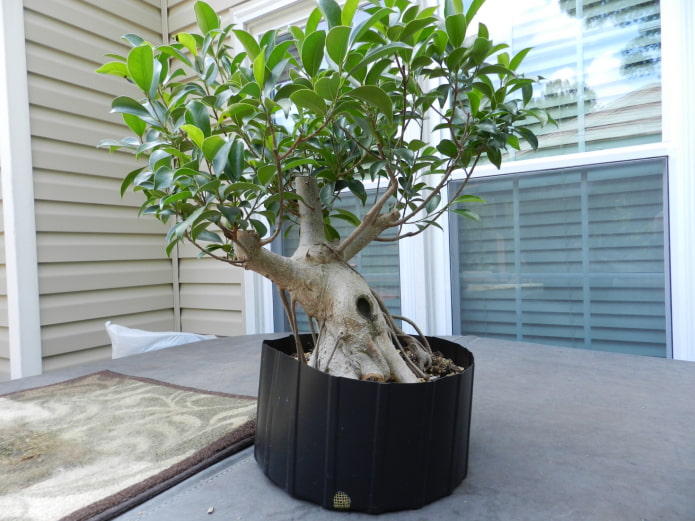
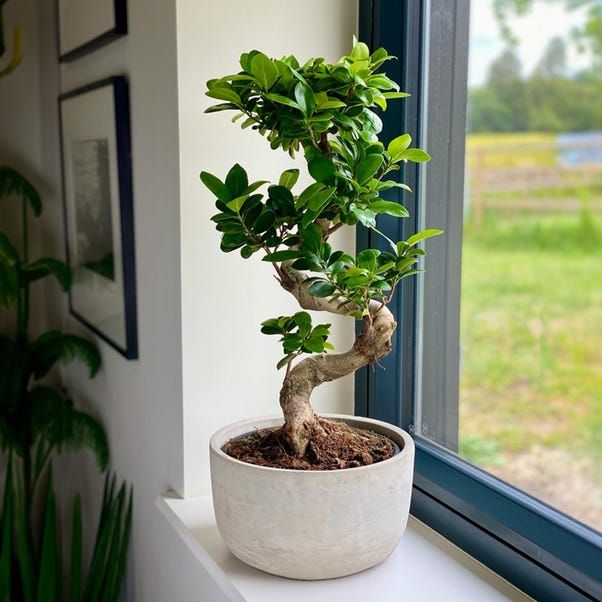
Ficus Retusa
Another “natural bonsai” reminiscent of the previous variety. But unlike microcarpa with almost round leaves, f. retusa has thinner, pointed leaves (resembling Benjamin’s foliage in shape). But the trunk is just as unusual – thick, with curves, beautiful in its own way.
Grow in well-lit places, it requires frequent watering and, if possible, spraying or maintaining high humidity.
- Mutabilis. An unpretentious representative of ficus. It has medium leaves that are initially bright white, and later turn green.
- American. Young leaves are light green, which becomes dark green over time.
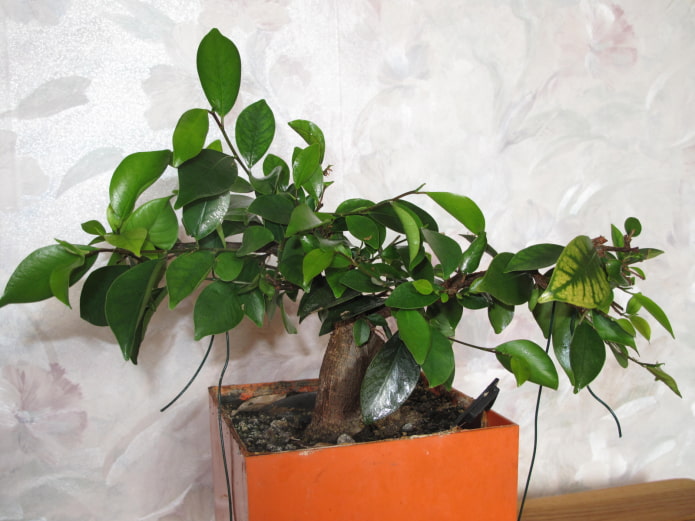
Ficus Triangularis
It got its name for the shape of its leaves – narrow at the trunk, wide at the edge. The leaves are dense, leathery, reaching 5-6 cm in length. For the leaves to look decorative, the plant requires high humidity – place a humidifier nearby or spray at least once a day.
When grown in a pot, the size of the flower rarely exceeds 1 meter in height. Color f. triangularis depends on the variety – the crown can be uniform green or variegated – with yellow spots.
- White Margin. It has green leaves with white blotches. Loves a lot of light and fertile soil. When the room temperature drops, watering is usually reduced.
- Sweetheart. With proper care, this type of ficus reaches 1.5 meters in height. It grows quite quickly. It has a soft yellow border and a dense crown.
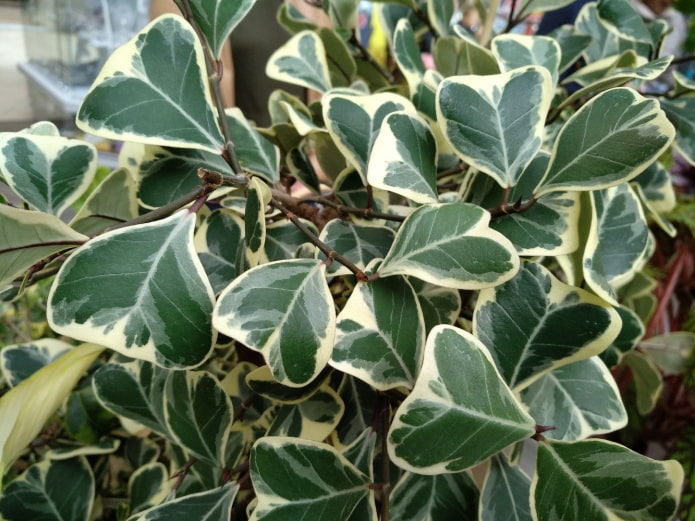
Ficus Parcellii
This variety is considered very rare and true connoisseurs of ficuses specifically look for it for their collections. But f. parcellii is loved not only for its inaccessibility, but also for its beauty: hard green leaves seem to be splashed with white paint. A pot with such a flower will decorate any living room or greenhouse.
The species loves warmth, so it should be protected from drafts and hypothermia, as well as direct sunlight (burns will appear). Don’t be stingy with water: water and spray more often.
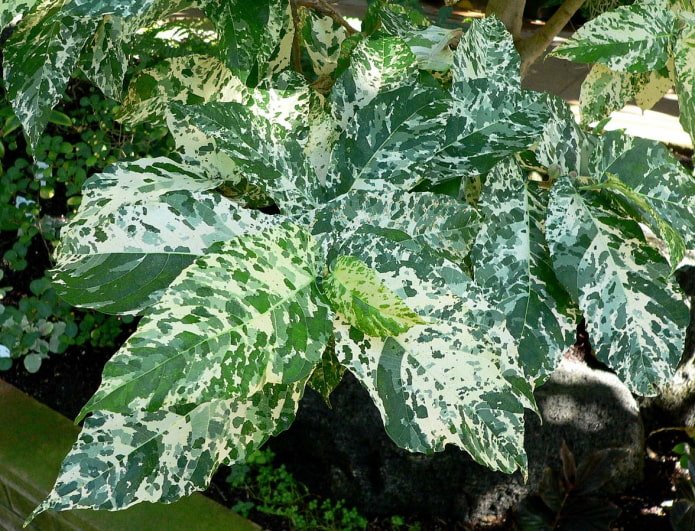
Ficus Ivy
The closest relative of pumila, at the same time similar to ivy. True, it has more modest sizes – both overall and individual single-color leaves. Grow f. hederacea roxb as an ampelous flower – on shelves, in hanging pots.
For the ivy-like ficus to feel good and constantly grow, provide it with high-quality regular watering with settled water. Do not forget about good drainage before planting – the roots should not be constantly in water.
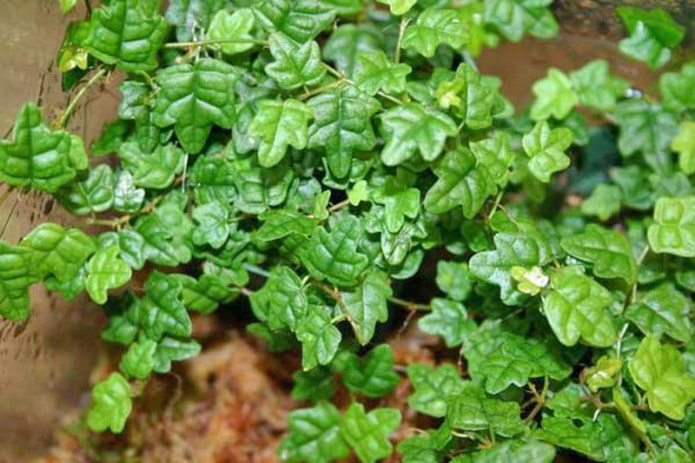
Ficus Carica
One of the few varieties that have edible fruits. The second name of the species is known to everyone – fig! Indeed, “figs” grow on the stems – tasty fruits that can be eaten.
In appearance, f. carica resembles a tall tree on a thin trunk with a lush crown. The leaves are large, the shape is broad-lobed palmate-incised (similar to grapes). Unlike its fellows, carica is not so thermophilic – it does not tolerate heat well, growing best at temperatures up to 20 degrees. It is also better to protect it from direct sunlight.
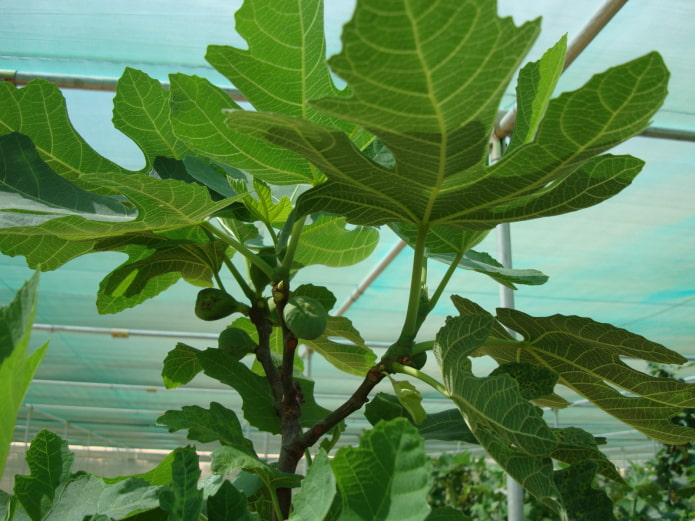
Ficus deltoidea
The name describes the appearance: the leaves are in the form of soft triangles, reminiscent of the letter “delta”. The plates are small (5-8 cm in length), dense. Most often they are monochromatic, but variegated subspecies are also found. On the branches of young f. deltoidea you can see small fruits – they are inedible, but give the plant a special recognizable appearance.
For successful cultivation, the deltoid ficus is placed in a bright place away from radiators (during the heating season). The flower should be watered and sprayed abundantly.
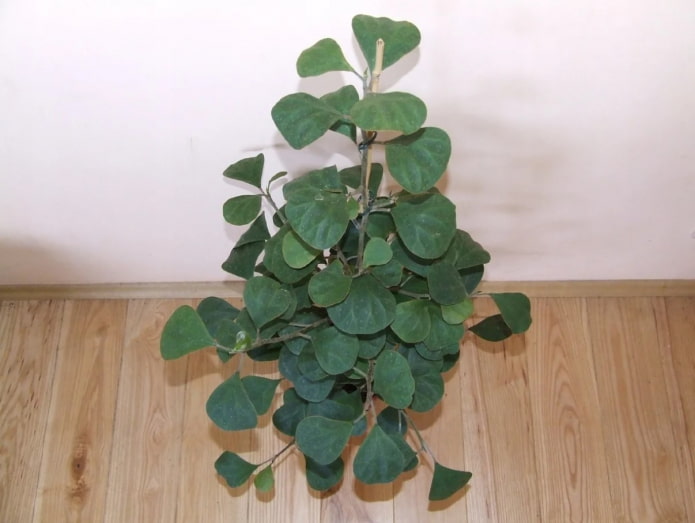
Ficus Sacred
The third bonsai on the list, which in the wild grows like a banyan. However, in indoor conditions it is distinguished by its small size, as well as a decorative trunk of an unusual shape. The leaves are triangular, with elongated tips. The color is green, light yellow veins are clearly visible.
Unpretentious f. religiosa is undemanding to the soil, will grow well at temperatures above 15 degrees and regular watering.
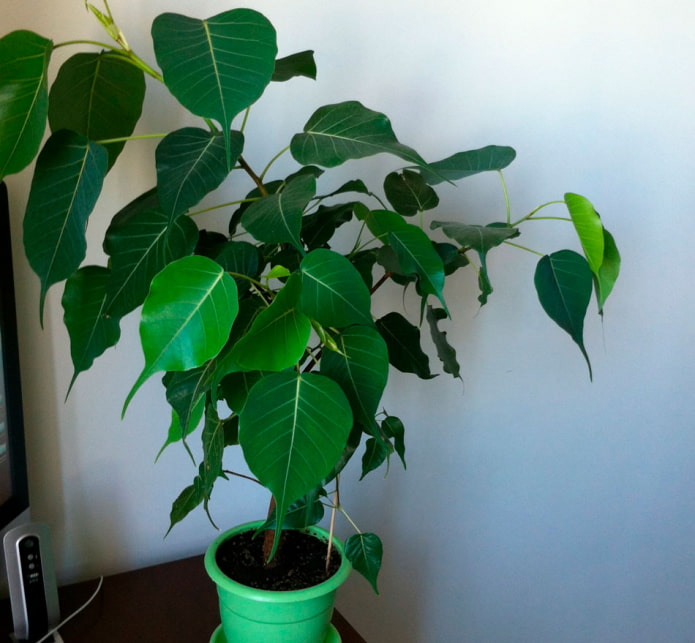
Ficus rubiginosa
In appearance, f. rubiginosa can easily be confused with variegated rubber plant, but the rusty-leaved species is smaller in size and has shorter leaves. The color is variegated, the core and tips of the leaf are burgundy. The variety is more lush, bushy.
Grows well in well-lit places, in conditions of constant high humidity. It should be understood that the lighter the growing area, the more decorative the leaves of the flower will be.
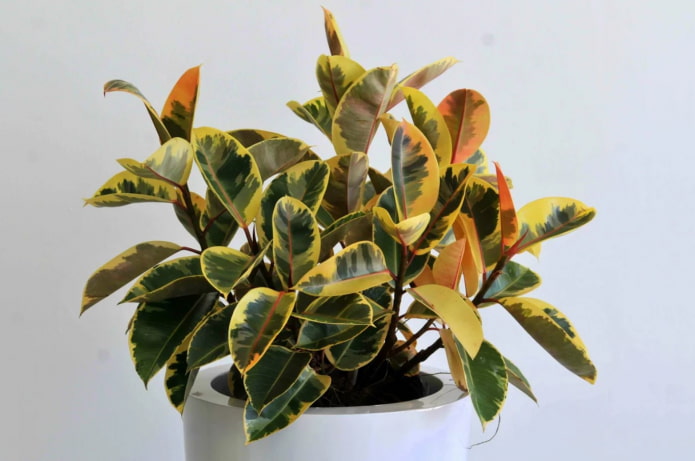
Ficus goblet-stipular
Not the most visually beautiful species, but the most trouble-free in cultivation: the plant tolerates temperature changes, overwatering or drought, dry air. The leaves are long, oval – up to 20 cm in length, up to 6-7 in width. Monochrome, rich green.
Although f. cyathistipula and is undemanding to conditions, but the plant will feel better with sufficient lighting, a temperature of at least 16 degrees, and high humidity.
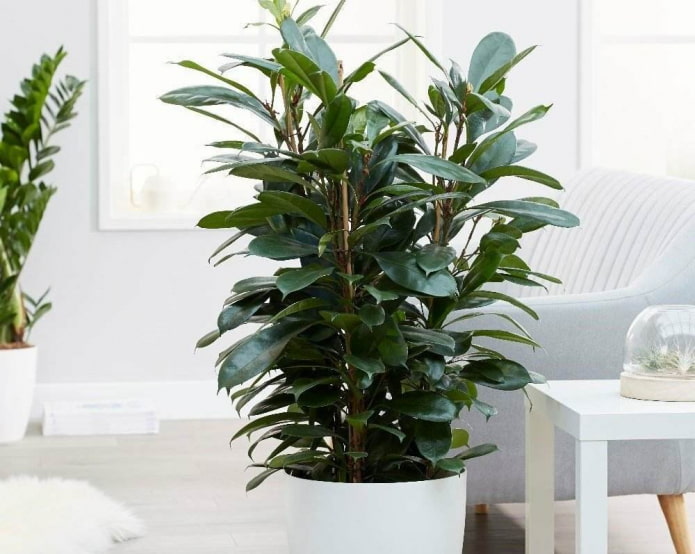
Mountain Ficus
Let’s return to creeping flowers: if the two previous ones (pumila, ivy-like) were similar to each other at least in their small size, then f. montana is a completely different matter. Its leaves are quite large (~8*4 cm), elongated oval in shape. Since the branches hang down, it is grown as an ampelous plant.
The lighter and warmer the room, the faster the mountain variety will grow. And vice versa – in dark cool corners the flower may stop growing altogether.
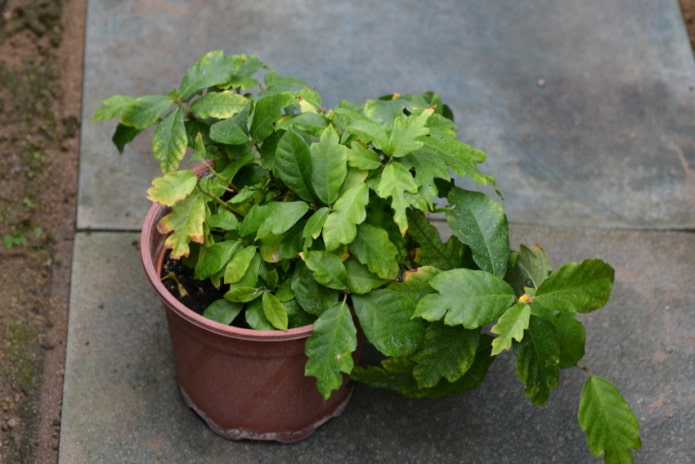
Ficus Palmeri
Another species suitable for growing as bonsai: the root system is superficial, so the flower can grow in a shallow container, usually used for bonsai. The trunk expands as needed – the plant uses it to store water during the dry season.
The leaves of f. palmeri are light green, heart-shaped, with pronounced light veins. In wild plants, the size of the plates reaches 15 cm in length and width, in indoor dwarf trees they are usually smaller.
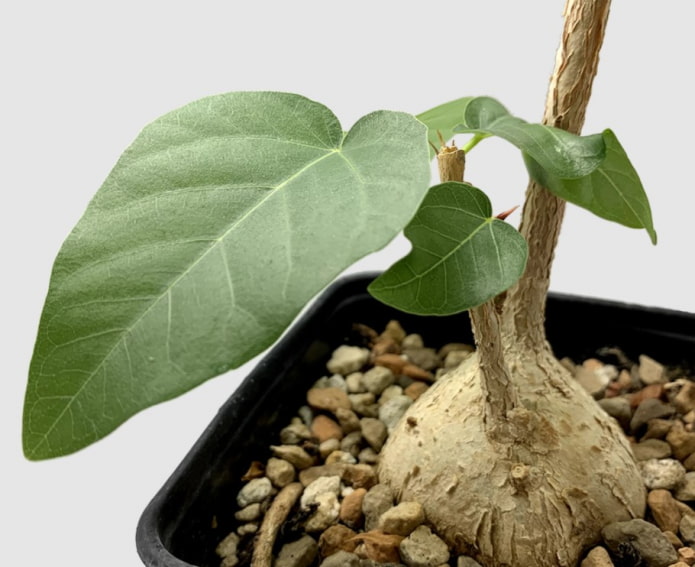
Ficus Petiolaris
An amazing variety that can look completely different: in arid areas, it expands the lower part of the trunk to store life-giving moisture. In humid areas, it is a tree on a thin elongated leg. Combines both options into one – dark green heart-shaped leaf blades with red veins.
When growing in houses and apartments, keep in mind that f. petiolaris does not like drafts, direct exposure to ultraviolet light and dry air. In addition, the flower sheds its leaves in winter – there is no need to be afraid of this, in the spring the sessile ficus will grow again.
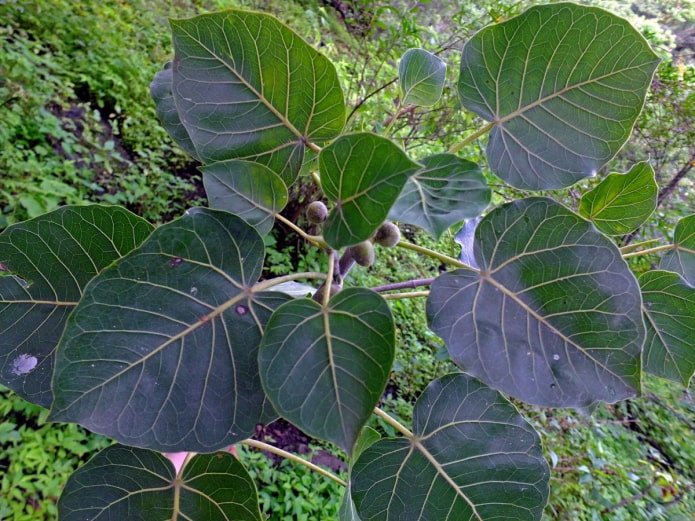
Ficus Sagittata
Finally, the fourth creeping variety – f. sagitatta got its name thanks to its long, sharp leaves that resemble arrows. A single-color plant looks aesthetically pleasing, but the variegated subspecies looks more impressive.
They are grown on shelves, furniture lids and in hanging baskets. As the sagitta grows, it will lower its branches, and if you provide it with hooks, it will crawl along a wall or other surface.
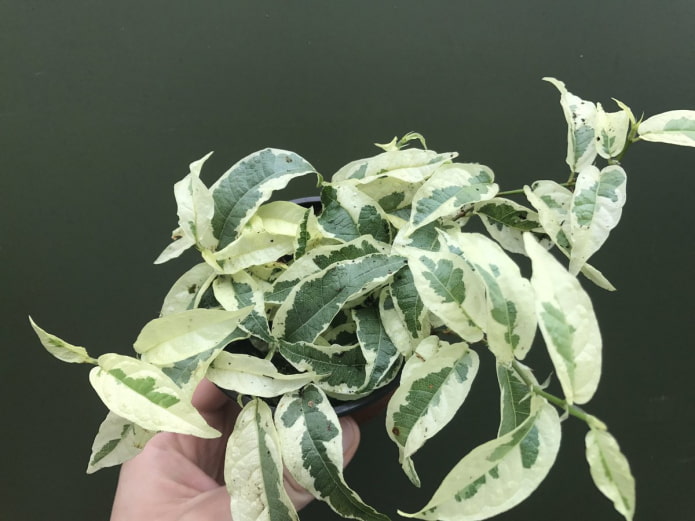
Ficus are amazing plants! They can be large-leaved or small-leaved, grow as trees or shrubs, have slender or swollen trunks. Even if you have only unpretentious ficus in your apartment, you can achieve a variety of “indoor landscape”.
Now reading:
- Loft style wallpaper: 45 photos of modern ideas and design solutions for the interior.
- best alternatives for replacing a wall in the interior.
- Linoleum care: tips and instructions for proper treatment.
- Your Comprehensive Guide to Pre-Owned Lexus Vehicles
- Laminate swelling: causes, methods of elimination and repair tips.